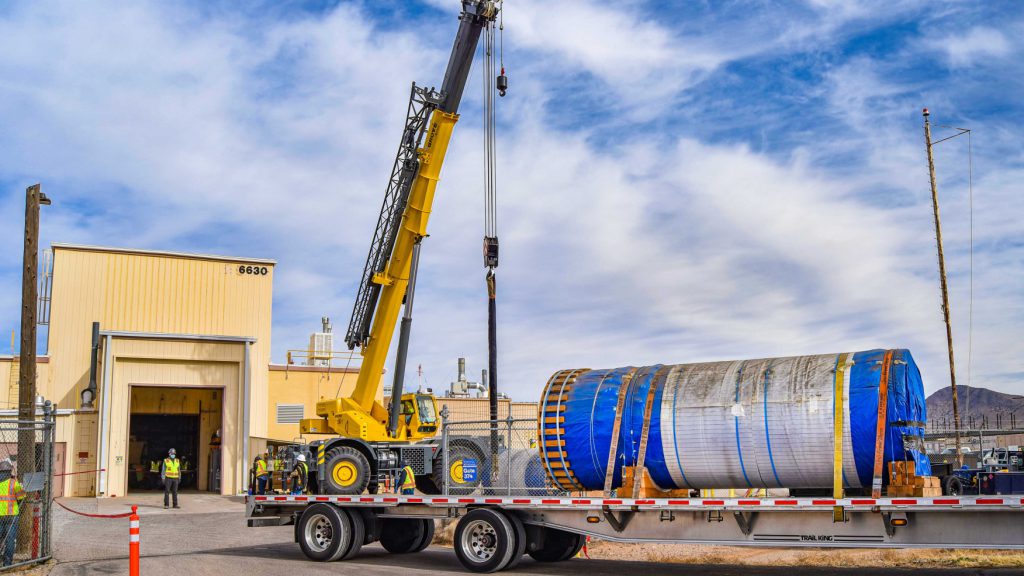“[Data] is needed to confirm and guide how the industry should manage storage canisters for longer than anticipated.
‘Salt can be present in the ambient air and environment anywhere, not just near the ocean. We need to be able to plan for extended long-term storage of spent nuclear fuel at nuclear power plants for the foreseeable future – it’s a national reality,’”
BY: KRQE Staff | krqe.com

ALBUQUERQUE, N.M. (KRQE) – Sandia National Laboratories reports that it is equipping three 22.5-ton stainless steel storage containers with heaters and instrumentation in order to simulate nuclear waste so that researchers can study their durability. According to Sandia National Labs, the three, 16.5 feet long canisters arrived in mid-November and will be used to study how much salt gathers on canisters over time.
Researchers will also study the potential for cracks that are caused by corrosion induced by salt and stress. Sandia reports that currently, there is not an operating geologic repository in the United States to permanently dispose of spent nuclear fuel.
As a result, spent fuel is being stored at commercial nuclear power plants in storage pools and dry storage canisters.
The storage canisters that are holding the spent nuclear fuel were designed to have a useful life of a few decades however, Sandia’s Nuclear Energy Fuel Cycle Senior Manager Tito Bonano says that now they likely need to be used longer than planned.
Bonano explains that data is needed to confirm and guide how the industry should manage storage canisters for longer than anticipated. “Salt can be present in the ambient air and environment anywhere, not just near the ocean. We need to be able to plan for extended long-term storage of spent nuclear fuel at nuclear power plants for the foreseeable future – it’s a national reality,” said Bonano in a press release.
The project is expected to provide researchers with long-term implications for safety, public health, industry practices, regulation framework, and future research pathways according to Bonano. The project is funded by the Department of Energy’s Nuclear Energy office and will last for three years.
Sandia’s research team will equip each of their three canisters with 32 electrical heaters to simulate decay heat which is heat released as a result of radioactive decay, from the 32 spent fuel assemblies that would usually be stored in that type of canister. Samuel Durbin, mechanical engineer and Sandia’s canister project lead explains that no radioactive materials will be used in the testing.
An instrument known as a thermocouple will measure temperatures and other sensors for diagnostic testing and surface sampling will also be added. Once the equipped canisters are tested and repacked for transport at Sandia, the team plans to move them to a storage pad at an independent spent fuel storage installation on the West Coast so they will experience the same real-life conditions of in-use canisters.
According to a press release, the Sandia team and partners from other national laboratories will monitor the test canisters and record surface deposits, especially chloride-bearing salt, for three to over 10 years depending on how much the data varies over time.
In total, 15 never-used and never-irradiated department-owned canisters are being distributed for large-scale testing to Sandia as well as two other national laboratories, an industry research institute, and an independent storage facility.
